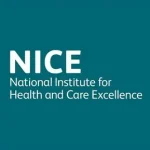Our story
2006
brainstrust is founded by Helen and Peter Bulbeck with the goal of helping Megan and others like her to access intra-operative MRI brain surgery in the United States.
brainstrust is registered with the Charity Commission.
2007
June 2007, Meg’s tumour is successfully removed at Boston’s Brigham and Women’s Hospital
With it now apparent that there is no effective support available for people with a brain tumour, brainstrust’s board of Trustees decide to expand, re-investing a small surplus of funds so that people don’t have to feel as lost as Meg’s family did, from the point of a brain tumour diagnosis.
2008
brainstrust’s volunteer team expands to include one full time member of staff.
2009
Work begins on our first patient and carer resources – the ‘Who’s who guide’, ‘brain book’ and 'brain box’.
brainstrust.org.uk is re-launched, with a new focus on providing online information and support for people with a brain tumour and their carers.
2010
The first brainstrust Meet Up is held in Winchester.
The brain box is launched – a groundbreaking toolkit, free for people with a brain tumour that helps them manage the complicated and confusing journey from when you are diagnosed.
The Rank Foundation commit to 3 year funding of the UK’s first brain tumour support specialist. The first step towards making 24/7 coaching led support available to the whole of the UK brain tumour community.
2011
Work starts on the Brain Tumour Patient Information Portal – a project to help people with a brain tumour understand their condition better by granting online access to National Cancer Registry held records.
The braintumourhub is launched, with funding from the Nominet Trust, to help patients and carers access support in their area, and clinical trials relevant to their tumour type.
Our information for people with a brain tumour is awarded NHS England’s Information Standard Accreditation.
2012
Work with Edinburgh Cancer Centre, the University of California, San Francisco and Coventry University demonstrates the positive impact of coaching for brain tumour patients.
brainstrust join forces with Cancer Research UK to make the Patient Information Portal available to all cancer patients.
brainstrust’s board of Trustees are awarded ‘Trustee board of the year’ at the Wessex Charity Awards.
brainstrust opens dedicated counselling service for the brain tumour community.
2013
Working with Public Health England’s National Cancer Registration Service, we identify, for the first time, the number of people living with a brain tumour in England.
Julian Fellowes shows his support for our work, joining us for dinner at Knightsbridge Barracks and raising £20,000 in the process.
The acclaimed brain tumour patient guide is launched.
Wear Grey attracts 10,000 people and raises £7,000.
Recognising a need for better support for children and families affected by a brain tumour, brainstrust launches ‘little brainstrust’.
brainstrust secures relationships that improve access to hypnotherapy for people with a brain tumour.
brainstrust’s ‘Northern’ offer is established in Sheffield with an overdue expansion of the team.
www.braintumourawareness.org.uk is launched to drive awarness of the real issues faced everyday by people with a brain tumour.
2014
brainstrust secures official registered Charity status in Scotland.
The Rank Foundation commits to 3 years funding for an additional support specialist and volunteer led programme in the North of England.
‘Walk a mile’ - guide for carers published.
The Brain Tumour Patient Information Portal is shortlisted for a Quality in Care Oncology award.
brainstrust and partners launch the first national brain tumour tissue bank is launched.
2015
brainstrust launches a 5 year vision for a service to help all of the 60,000 plus people in the UK living with a brain tumour, and their carers.
The brain tumour tissue campaign is launched in a bid to improve consent levels.
The brain tumour patient guide is cited as an example of best practice of how to communicate information to patients and carers clearly.
Our policy arm is launched to the public, setting out our agenda and plans for putting the world right, the right way, for people with a brain tumour.
We celebrate our 100th Meet Up, and 500 registered members of the brainstrust Meet Up community.
brainstrust receives a ‘Charity Comms Inspiring Communicator of the year’ award.
Wear Grey raises £30,000 for brain tumour support.
Brain tumour support given due prominence for the first time at the BNOS conference as brainstrust is invited to deliver closing plenary.
brainstrust’s response to the question posed on BBC Radio 2’s Jeremy Vine show ‘is there such a thing as a benign brain tumour?’ receives overwhelming support.
The Patient Information Portal project wins top prize at the NCIN conference in Belfast.
The brainstrust brain tumour support community on facebook reaches 1000 members.
2016
brainstrust celebrates 10 years of brain tumour support.
We publish the first dedicated guide for brain tumour patients undergoing radiotherapy.
A milestone for brain tumour support as brainstrust’s strategy for steady, sustainable growth sees annual funds raised for brain tumour support exceeding £0.5m for the first time.
Four new Little White Books are launched, signposting people to the help available in Merseyside, London, South East Scotland and Glasgow.
2017
brainstrust joins the Tessa Jowell Brain Cancer Mission. The mission consists of passionate academics, doctors, members of cancer charities, patients, and other individuals to help facilitate a new national strategy for brain tumours. The mission serves as a convening body for these organisations, enabling them to work together to make a tangible change in brain tumour treatment and research.
We join the #callforclarity campaign, to promote robust and rigorous impact reporting internally and across the charity sector. Alongside this we begin our own journey to take our impact reporting beyond counting beneficiaries and anecdotal testimony, working closely with the National Lottery Community Fund.
The Fatigue programme is launched, with resources to help our community cope with and tackle the debilitating Fatigue that accompanies brain tumour treatment. 316 people access this arm of our service in the first 6 months.
We hold the first UK Brain Tumour Symposium in Milton Keynes in collaboration with Brain Tumour Research. The event sold out in 48 hours.
2018
799 new people accessing phone and email support (up 58% on 2017 – 507/799) , accompanied by the rollout of the brainstrust progress tracker to evaluate the progress that these people make with brainstrust’s coaching and support.
Follow the Seagulls treks expand to Fife, our first year with 3 concurrent 50 mile walks, raising a total of £43,000 for our work.
Collaboration with the James Lind Alliance Priority Setting Partnership (JLA PSP) continues with brainstrust running workshops to develop key research questions around the 10 priorities for brain tumour research as identified by the PSP.
With Public Health England and the National Cancer Registration and Analysis Service, we launch the brain tumour data dashboard, giving unprecedented access to registry held data in an easy to understand format. It helps people understand questions like ‘how many people have a brain tumour like me, near me?’ And ‘how many people like me have brain tumour surgery?’.
First Scottish Symposium held in Glasgow to close the information gap for the brain tumour community and establish a collaborative network in Scotland of charities, healthcare professionals, patients and caregivers.
91% leap in demand for brain boxes (431/824), prompting the first ‘brain box appeal’ which raises £21,000.
Siemens Healthineers nominates brainstrust as charity of the year.
2019
We are able to directly support and coach over 1000 people in 12 months for the first time.
Brain tumour ‘know hows’ launched offering bite sized overviews of vital topics including Proton Therapy, vaccine treatments and cannabinoids.
Follow the Seagulls expands to include a 50 mile trek in Devon and raises a record £70,000.
brainstrust selected to represent patients and caregivers on the NHS England review of the brain tumour patient pathway.
‘First, we are people’ - our new strategy is launched and taking into account all that we’ve learned over the previous 14 years, puts laser focus on the human, practical and cultural contexts in which people find themselves following a brain tumour diagnosis. It sets out our journey to help these people become less isolated, more in control, more engaged with their clinical care and condition, and better resourced.
2020
We launch our new strategy. Fourteen years in the making, this strategy, ‘First, we are people’, puts laser focus on the human, practical and social needs people have following a brain tumour diagnosis. We focus our help on supporting people to be less isolated, more in control, more engaged with their clinical care and condition, and better resourced.
The year ends with the outbreak of the Covid-19 Pandemic. This causes heightened anxiety for our community; is isolating, harmful or even lethal for vulnerable patients; it destabilises our tried and tested ways of working. Public fundraising stops.
Our team pivots at lightning pace, taking all services online and with sustained reach and impact.
Our funders, supporters and collaborators tell us that they are confident in our ability to deliver, and they are providing additional support and flexibility, for which we are truly grateful.
Early calculations suggest that an initial estimate of a 40% drop in income is reduced to 20% thanks to quick and decisive action and this support.
We remain an agile organisation, ready to adapt our work and adjust our scale to meet this challenge and collaborate where possible to remain efficient and effective for our community.
2021
Brain tumours didn’t stop during the pandemic. So neither could we.
In April 2021, we committed to being invaluable – to each other, to our friends and families and to the people in the brain tumour community who needed us. We vowed to do this within the framework of our strategy ‘first we are people’, which resonated with our community more than ever before in the context of this crisis, and we committed to making sure that on every step of the journey, we would be creating a chapter in brainstrust’s history that we would be proud of.
Events move online. 1034 people attend 128 webinars.
Our online support group grows to 2879 members.
The Covid-19 hub is launched to help patients and their families stay updated and informed on relevant developments, as well as allowing them access to the most up to date information.
Our policy work pivots to engage with the NHS at the highest possible levels to ensure that the needs of our community are heard.
We embarked on unprecedented levels of outreach work, and reached out to those who we knew would be alone and afraid to help them.
We made it clear that we were very much open for business with mailings and updates to the clinical community explaining changes both to our services and to the needs of the brain tumour community.
The Patient Research Involvement Movement PRIME) is launched to bridge the gap between the clinical and patient communities. This work improves the quality of clinical brain tumour research and its design.
Professor Puneet Plaha joins brainstrust’s board of Trustees
2022
We are now routinely welcoming over 100 new people every month to our coaching and support.
Our active caseload during the year is 2339 people – 85% more than the previous year.
Our commitment to reporting impact meaningfully is realised with another year’s worth of data. Even with this increased need we improve our impact across all indicators. On average people tell us our coaching, information and support helps them to feel 18% better. This is despite facing a progressive, life-limiting, life-changing or terminal diagnosis.
We raise a record £952,203 to fund our work.
Jack Jarvis rows the Atlantic. He not only sets a new world record but raises both £76,000 for brainstrust and an awareness of our work that is aided by his engagement with personalities like David Beckham.
We welcome the support of the Moondance Foundation who provide funding to expand our work in Wales.
Our work to support hospitals in the North West of England with their service development wins a Nursing Times award.
8 year old Ravi Adelekan launches his fundraising and awareness campaign for brainstrust and The Brain Tumour Charity with the launch of his charity single. His cover of The Greatest Showman’s ‘A Million Dreams’ features appearances from Hugh Jackman, Michael Gracey. Bastille, Damon Albarn, Paloma Faith and Metronomy.
2023
Following the previous year’s success, we invest to build capacity. We grow our team, expand our collaborative relationships and develop our skills to meet new need and demand. Impact is sustained (as evidenced by our robust reporting) which is now enacted routinely with meaningful volumes of data.
We work with volunteers to launch welfare and benefits support, which helps those that need it secure £94,760 in vital support.
During the year, 3,439 people accessed our help via phone, email, webchat, or video call. This is an increase of 47% from last year (2,339), and 172% on the year before (1,264).
PRIME has now successfully supported research applications to the value of £20m
Our work to support hospitals in the North West of England with their service development wins a Macmillan Professional Excellence award.
brainstrust ambassador Ravi Adelekan wins ‘Child of Courage’ award at the Pride of Britain Awards.
2024
Perhaps our most challenging year yet.
Awareness of our challenge and our work is stronger than ever.
In turn our need is not only greater than ever but more complex than ever, with systemic challenges in the NHS, greater patient and family engagement in condition, and a growing landscape of novel treatments both at home and abroad.
Concurrently the global pandemic is followed by severe and sudden increases in the cost of business and the cost of living.
Due to robust financial management in previous years we are able to deploy reserves to meet increased and changed need while simultaneously restructuring our service to the advantage of our community. We endeavoured to set ourselves up for future growth, which we saw the beginning of in the second half of the year.
4689 people contact us directly for help during the year. An 8% increase on the previous year and double the number of the year before that.
Jack Jarvis joins brainstrust’s board of Trustees. Jack is a serving British Army Commando and record-setting transatlantic solo rower. He has a deeply personal connection to our work having lost his Grandfather to glioblastoma.
PRIME has now helped secure £28.2m in brain tumour research funding










